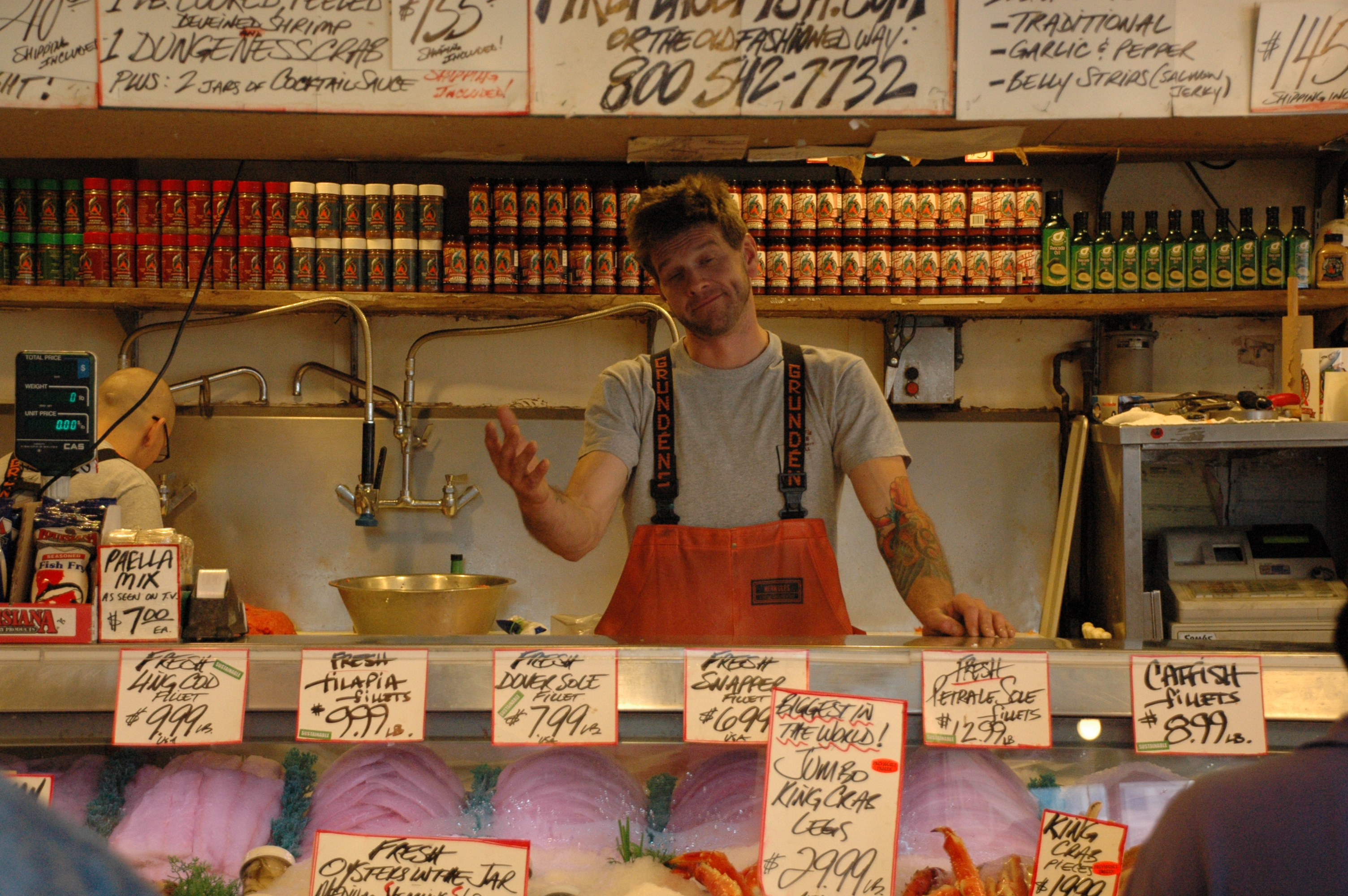Raise your hand if the fish counter intimidates you? At least once a week I find myself standing in front of the massive fish selection at Whole Foods challenged. Farmed? Wild? King? Alaskan? Atlantic? Pacific? Coho? And that’s just the salmon. Daunted by the unfamiliar, I ask the monger for the freshest catch for the best price and continue on my way.
The Schell Cafe is on-location this week in the Pacific Northwest. Early yesterday morning I strolled Pike Place Market in awe of the bounty. At one of the fish stalls I decided to put an end to my lack of salmon know-how and asked the monger for a quick course in salmon.
There are two types of salmon, Atlantic and Pacific. Atlantic salmon is usually farmed. Salmon from the Pacific is most often wild, but can also be farmed. What does farmed mean? Exactly what it sounds like, fish are bred and raised in cages or large net pens to meet the growing demand for seafood. Fish farms produce almost 20 percent of worldwide seafood. Most fish farms are located in Asia, primarily China and the majority of salmon farms are in Norway and Chile. Thirty percent of all seafood in the United States comes from fish farms. The debate over farmed fish is heated with primary concerns for environmental impact at the forefront. The more I learn, the more I appreciate the nutritional and environmental benefits of wild salmon.
In addition to my crash course at the market, I bought a local cookbook Pure Flavor written by the owner of Beecher’s Handmade Cheese. Read how author Kurt Beecher Dammeier explains salmon.
There are five kinds (species) of Pacific salmon:
Chinook, also called king salmon, the largest and fattiest fish, has firm, red fish
Chum, also called keta or dog salmon, is a lower-fat fish with firm, pale flesh and a very mild flavor.
Coho, or silver salmon, is a small fish with medium-red, less fatty flesh
Pink, or humpback, is the leanest salmon. It has soft, pink flesh.
Sockeye, also called red or blueback, has deep red meat, a firm texture, and the second highest fat content. It has the highest levels of omega-3s of all the types of salmon.
After exploring the city, we left Seattle behind and are currently tucked away in a small corner of Puget Sound. Husband brought along his fishing paraphernalia in hopes of scoring the biggest catch this week. He was sorely disappointed to find that the salmon season doesn’t officially open until the 16th. So, I’m headed to the local fish stand to see what wild, freshly caught salmon I can find.
In the meantime the Littles just brought in a feisty Dungeness crab they found on the beach. It’s almost time for lunch and if I can get my wits about me, perhaps I’ll boil my first live crab.
Stay tuned as our adventures continue…





YAY! Great information! I can’t wait to visit Seattle next year. It is sooo hot here in Paris! Still haven’t gotten too adventurous yet. We are trying to build our vocab and confidence a bit more!
Very good information! I will print and keep handy for clarity purposes while shopping and using our new grill!
Don’t leave us hanging……………do you cook/boil the crab like lobster?
Sounds like you all are having fun!! Can’t wait to hear how the crab turns out. Good luck!
(Hand raised here!)
Totally intimidated by the fish counter…and Phil doesn’t like fish. So I just don’t even bother…love salmon though!! Maybe someday I’ll get really brave! 🙂